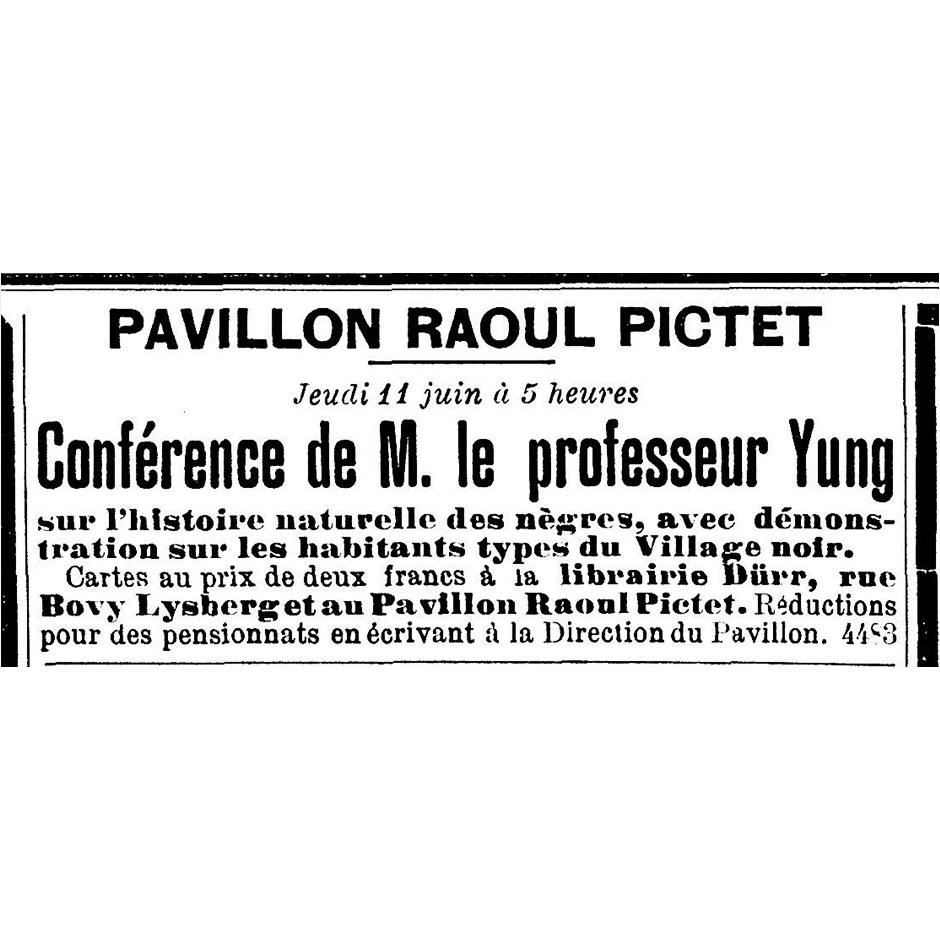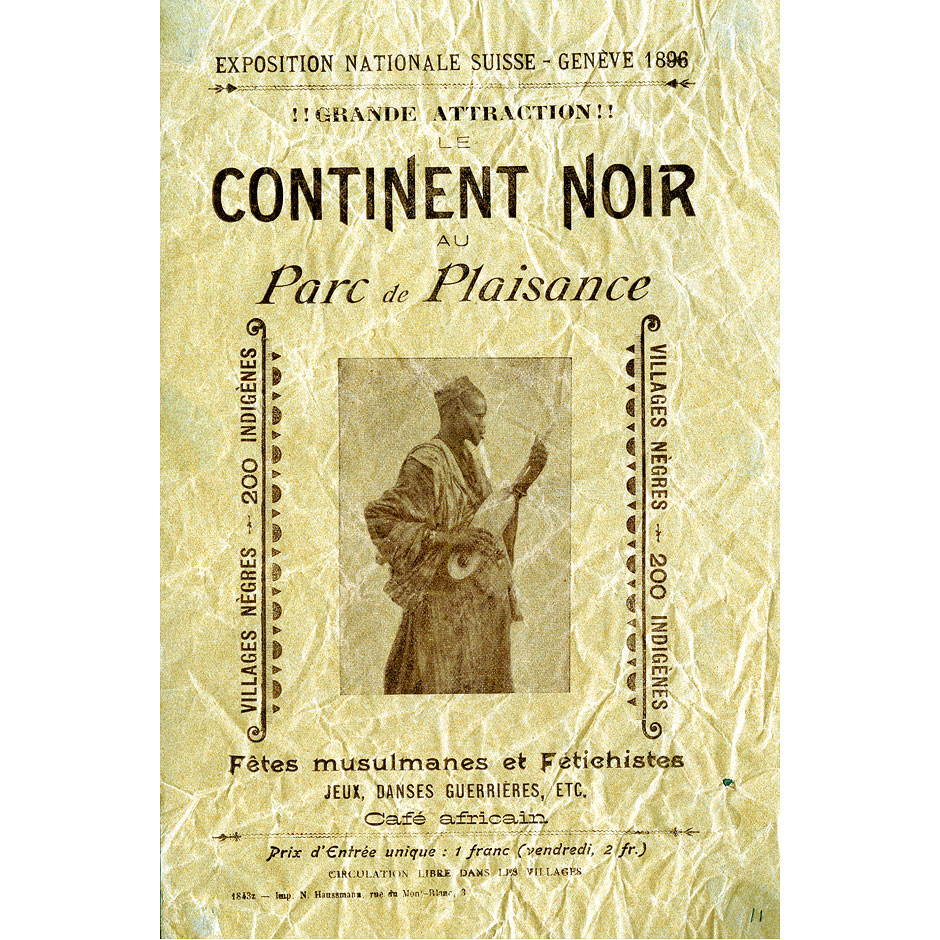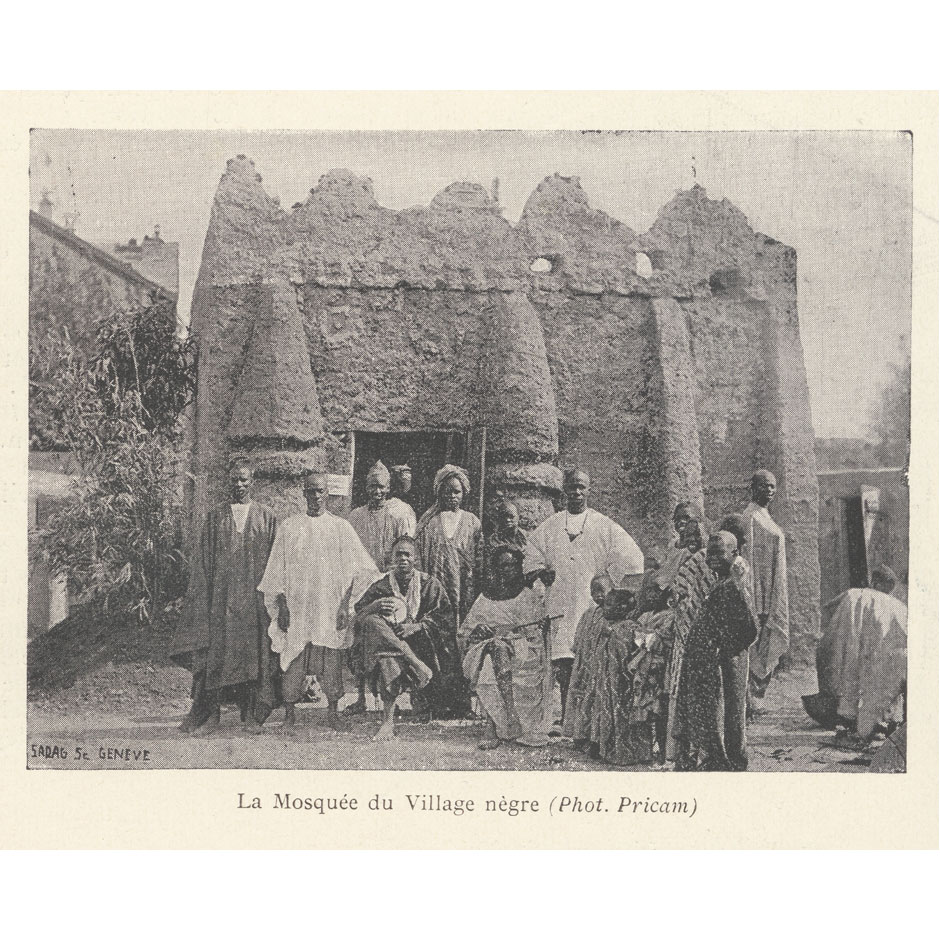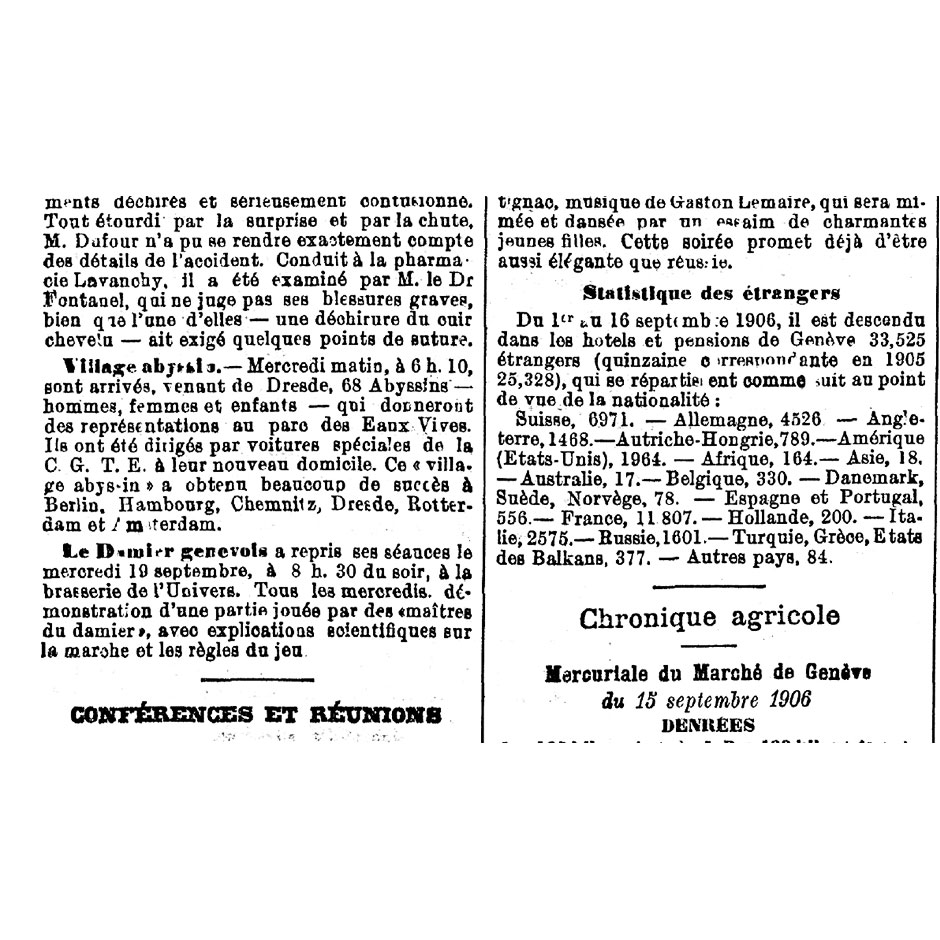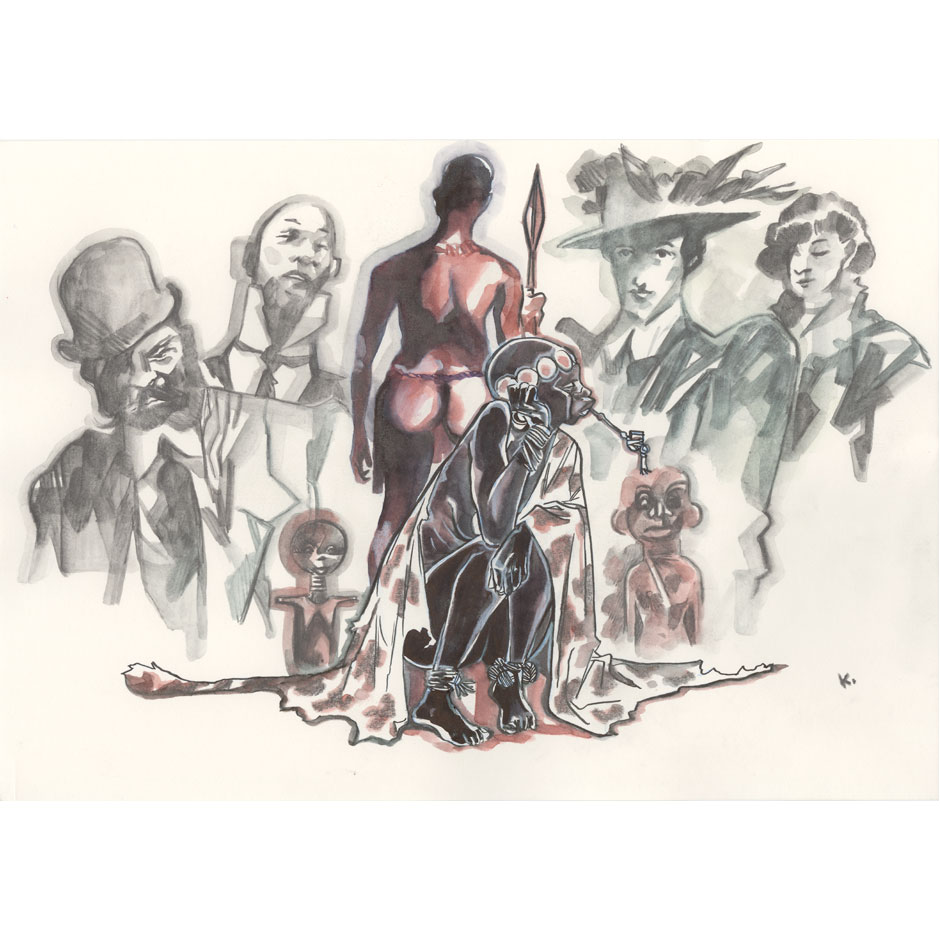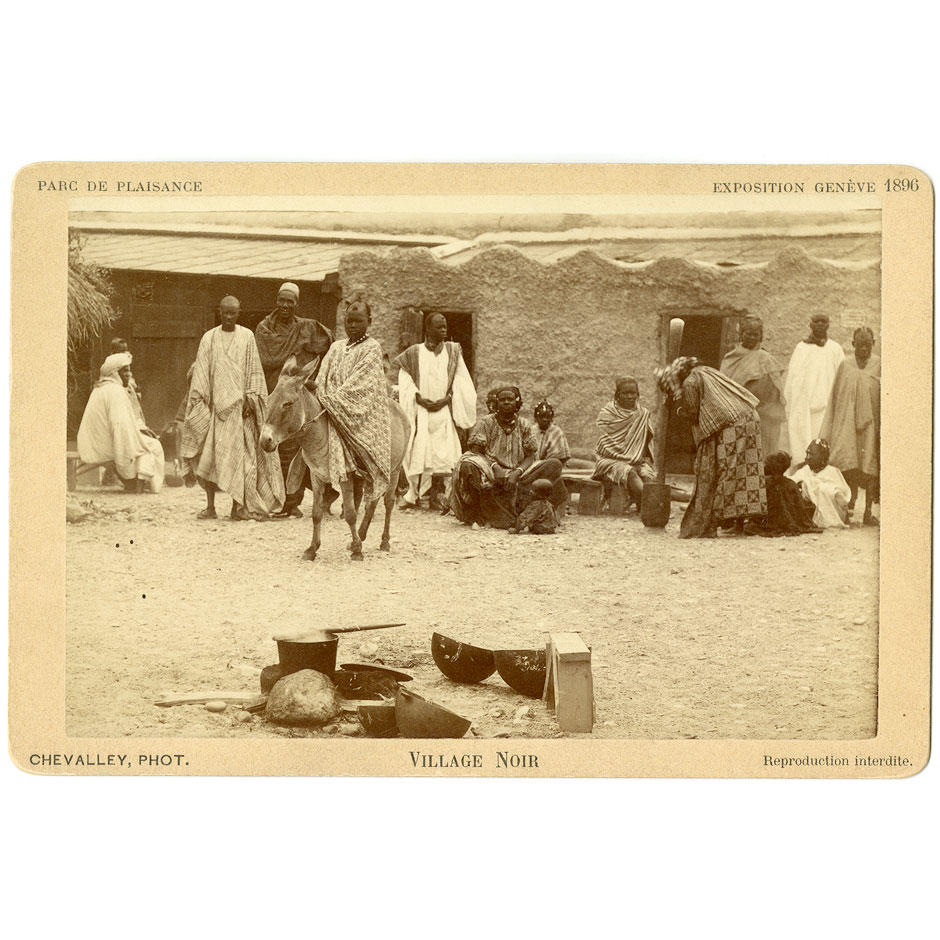Colonial Exhibitions and National Identity
Colonial Exhibitions and National Identity
The progress of colonial conquest was materialized in 19th century Europe in several forms, including shows. «Human zoos» were tourist attractions. Enclosed in parks or botanic gardens, Indigenous peoples from colonized lands were forced to stage their everyday life to divert the European public. A «Black Village» was installed in Geneva’s Amusement Park for the Swiss National Exhibition of 1896. Tens of thousands of people could thus closely watch what was presented to them as a people at the bottom of the human hierarchy. Human exhibitions contributed to develop and spread racist stereotypes in Europe as well as to shape national identities. At a time when the continent was dominated by patriotisms, the identity of nations was strengthened thanks to direct confrontation with alterity. Switzerland was no exception in this.
Fabio Rossinelli
Warning: some content presents racist, discriminating images or terms.
These are historical evidence of Western hegemonic thinking.
Their presence is indicated by this symbol.
The MEG holds the 85 objects sold when the “Black Village” went bankrupt. The list of their purchase by the Archeology Museum in 1896 only mentions their appearance and supposed uses. The Ethnography Museum’s inventories would subsequently imagine a specific geographical origin for them, by “stylistic” deduction, concealing the reason for their presence in Geneva and their confused and multiple identities in favour of a standardized, and therefore false, ethnographic description. With the texts of Émile Yung (1854-1918), at the time professor of racial anthropology and a regular visitor to the “Black Village” for his “measurements”, the press in 1896 promoted: “a room full of works of art, wooden and ivory statuettes, ornaments of all kinds, furniture, etc. that is not one of the least curiosities in this exhibition”. It is as impossible to know whether this was the lot seized by the debt enforcement Office as it is to understand the value for the families exhibited of these objects left behind in Geneva. F. Morin/MEG




